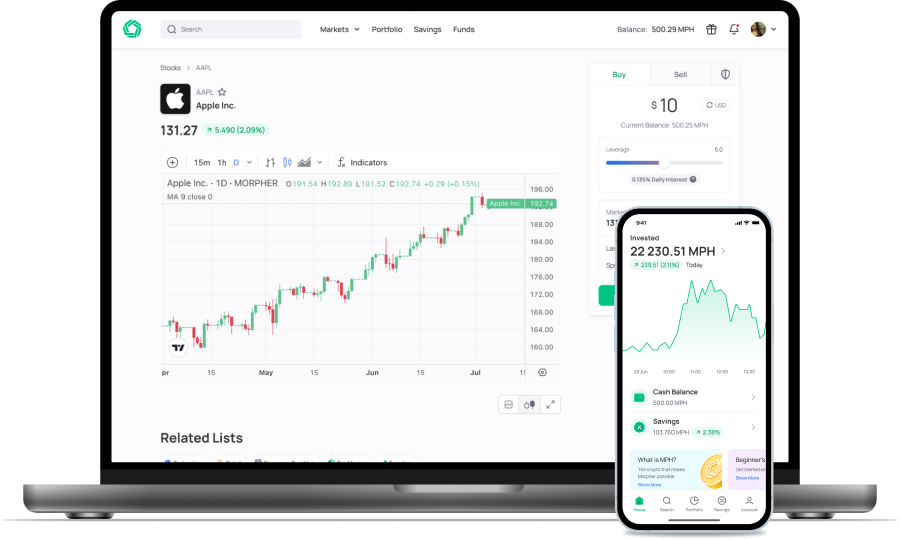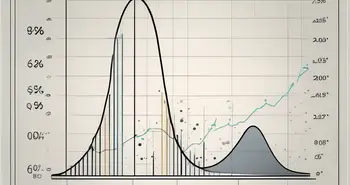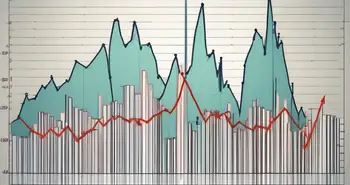Gaussian Channel Indicator: Spotting Trends and Timing Trades

As a seasoned trader, I can attest to the fact that successful trading is all about having the right tools at your disposal. One such tool that has revolutionized my trading strategy is the Gaussian Channel Indicator. This powerful indicator has helped me identify trend reversals, gauge market volatility, and make smarter trading decisions. In this article, I aim to provide a well detailed guide to understand this common technical indicator and show easy to follow and practical steps to use it in your trading strategy.
What is Gaussian Channel Indicator
The Gaussian Channel Indicator, also known as the Normal Distribution Channel, is a technical analysis tool that helps traders identify price trends and potential trading opportunities. It is based on the concept of normal distribution, which is applicable to a wide range of phenomena in nature and the financial markets.

It is built on the Gaussian (Normal) Distribution, a statistical model that creates a symmetrical bell curve, with most data concentrated around the mean.
Applied to price data, this concept generates upper and lower channels that encapsulate price movements. These channels serve as dynamic support and resistance levels, with the upper channel often indicating resistance and the lower channel acting as support.
Why Traders Use the Gaussian Channel Indicator
The Gaussian Channel Indicator is widely used by traders for its ability to enhance market analysis and decision-making. Here’s why it’s an indispensable tool:
Accurate Support and Resistance Levels: The upper and lower channels act as dynamic boundaries for price movements, making it easier to spot potential reversals or breakouts. These levels guide traders in timing their entries and exits while also aiding in the placement of stop-loss and take-profit orders.
Adaptability to Market Volatility: Unlike static tools, the Gaussian Channel Indicator automatically adjusts to changing market conditions. This adaptability allows traders to gauge the strength of price movements, helping them react effectively to high or low volatility scenarios.
Improved Trade Accuracy Through Confluence: When combined with other technical indicators like the RSI, moving averages, or trendlines, the Gaussian Channel Indicator becomes even more powerful. This confluence of tools helps confirm signals and reduce false entries, increasing the probability of successful trades.
Also, while you are reading, we suggest always putting your new knowledge to the test. Morpher gives you unlimited data, unlimited layouts and unlimited indicator combos on one chart. On top of that, Morpher gives you candlesticks for markets you cannot find anywhere else, like luxury watches, sneakers, NFTs, and many more. Access the best charting tools on Morpher. Plus, it's all free.
Pros and Cons List

How to Use the Gaussian Channel Indicator
Effectively using the Gaussian Channel Indicator involves proper setup, understanding its signals, and integrating it into your trading strategy. Here’s a step-by-step guide:
Setting it Up: Simple 2 Parameters Approach
1. Determine the Period Length
- What It Is: The period length defines the number of past data points (candlesticks) the indicator uses to calculate the channels.
- How to Choose:

- Tip: Start with a standard period like 20 and adjust based on how well the channels align with historical price movements.
2. Set the Channel Width (Standard Deviation)
- What It Is: The standard deviation determines how wide the upper and lower channels are from the moving average.
- How to Choose:

- Tip: A common default is 2 standard deviations. Adjust if the channels seem too tight or too wide for the asset's volatility.
3. Customize Based on the Asset and Timeframe
- Volatility Matters:
- Highly volatile assets (like cryptocurrencies) may require wider channels.
- Stable assets (like major forex pairs) might work better with narrower channels.
- Timeframe Considerations:
- Shorter timeframes can be noisier; consider wider channels to reduce false signals.
- Longer timeframes are smoother; tighter channels might be effective.
- Tip: Observe the asset's historical behavior on your chosen timeframe to fine-tune your settings.
Interpreting Bullish and Bearish Signals

Identifying Entry and Exit Points
Entry Points:
- Buy when the price dips below or touches the lower channel in an uptrend, especially if confirmed by other indicators like the RSI (oversold zone).
- Sell when the price breaks above the upper channel in a downtrend, reinforced by indicators like moving averages showing bearish crossover.
Exit Points:
- Take profits near the upper channel in an uptrend or the lower channel in a downtrend.
- Use trailing stop-loss orders outside the channels to protect gains during strong trends.
Boost Accuracy with Confluence:
Combine the Gaussian Channel with other indicators, such as moving averages, RSI, or support/resistance levels, to confirm signals and reduce false entries.
FAQ
What is the Gaussian Channel Indicator?
The Gaussian Channel Indicator is a technical analysis tool that helps traders identify price trends and potential trading opportunities. It is based on the concept of normal distribution and creates upper and lower channels that encapsulate the price action.
How can I use the Gaussian Channel Indicator in my trading strategy?
The Gaussian Channel Indicator can enhance your trading strategy by providing insights into market volatility, identifying support and resistance levels, and helping with risk management. By using the indicator in conjunction with other technical analysis tools, you can make more informed trading decisions.
How do I set up the Gaussian Channel Indicator?
When setting up the Gaussian Channel Indicator, you need to choose the right parameters, such as the period or number of bars used for calculation and the width or standard deviation of the channels. Backtesting and experimentation are crucial to finding the optimal settings for your trading strategy.
Is the Gaussian Channel Indicator suitable for all types of traders?
Yes, the Gaussian Channel Indicator can be used by traders of all levels of experience. However, it is important to have a holistic approach to trading and use the indicator as a complement to other technical analysis tools. It is also crucial to practice proper risk management techniques to protect your capital.
Final Thoughts
The Gaussian Channel Indicator has been a transformative tool in my trading journey. It’s not just about understanding charts or spotting trends, it’s about having a clear, actionable strategy that adapts to the market.
What’s particularly great about this indicator is its versatility—it works across assets, timeframes, and trading styles. Whether you’re trading short-term price swings or analyzing long-term trends, this tool can help you find clarity in the market chaos.
Ready to Take the Leap?
I’ve found Morpher to be the perfect platform to put strategies like this into action. With zero commission, infinite liquidity, and a wide range of assets, it’s designed for traders who want the best tools and the most flexibility.
Why wait? Sign up at Morpher today, grab your free sign-up bonus, and see how tools like the Gaussian Channel Indicator can help with your trading strategy. Let’s make your next trade your best one yet!

Disclaimer: All investments involve risk, and the past performance of a security, industry, sector, market, financial product, trading strategy, or individual’s trading does not guarantee future results or returns. Investors are fully responsible for any investment decisions they make. Such decisions should be based solely on an evaluation of their financial circumstances, investment objectives, risk tolerance, and liquidity needs. This post does not constitute investment advice.

Painless trading for everyone
Hundreds of markets all in one place - Apple, Bitcoin, Gold, Watches, NFTs, Sneakers and so much more.

Painless trading for everyone
Hundreds of markets all in one place - Apple, Bitcoin, Gold, Watches, NFTs, Sneakers and so much more.









